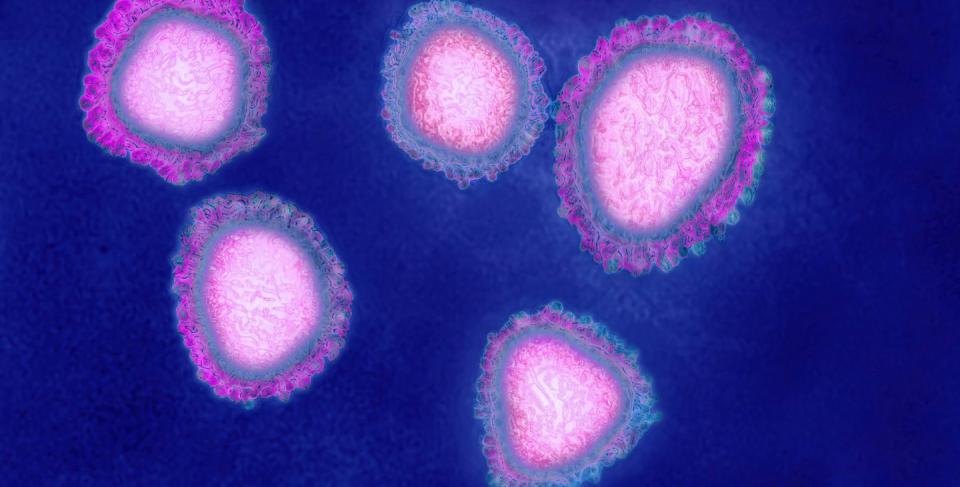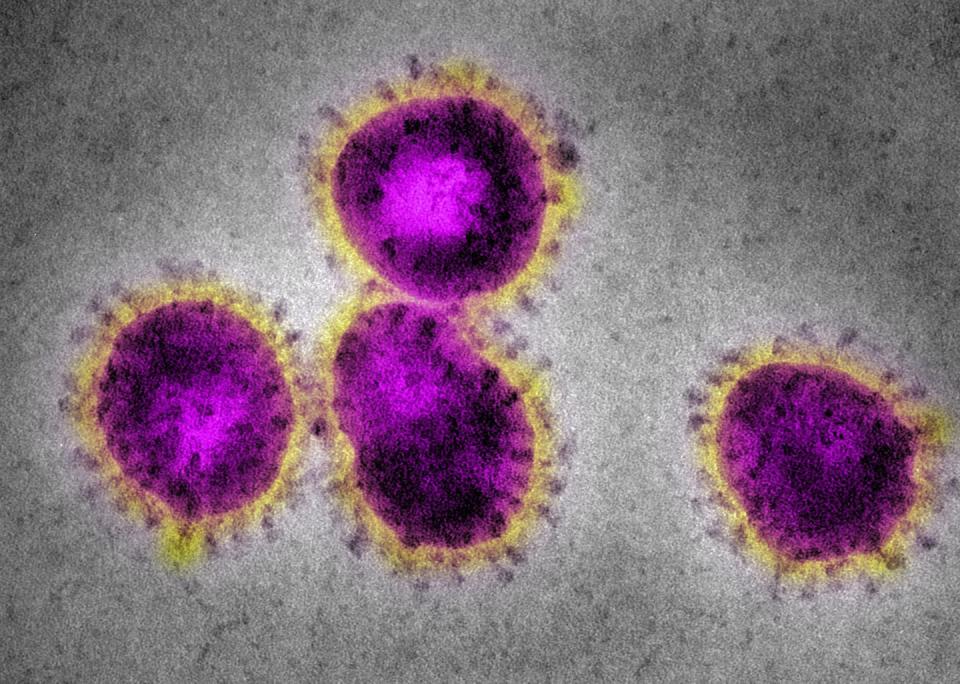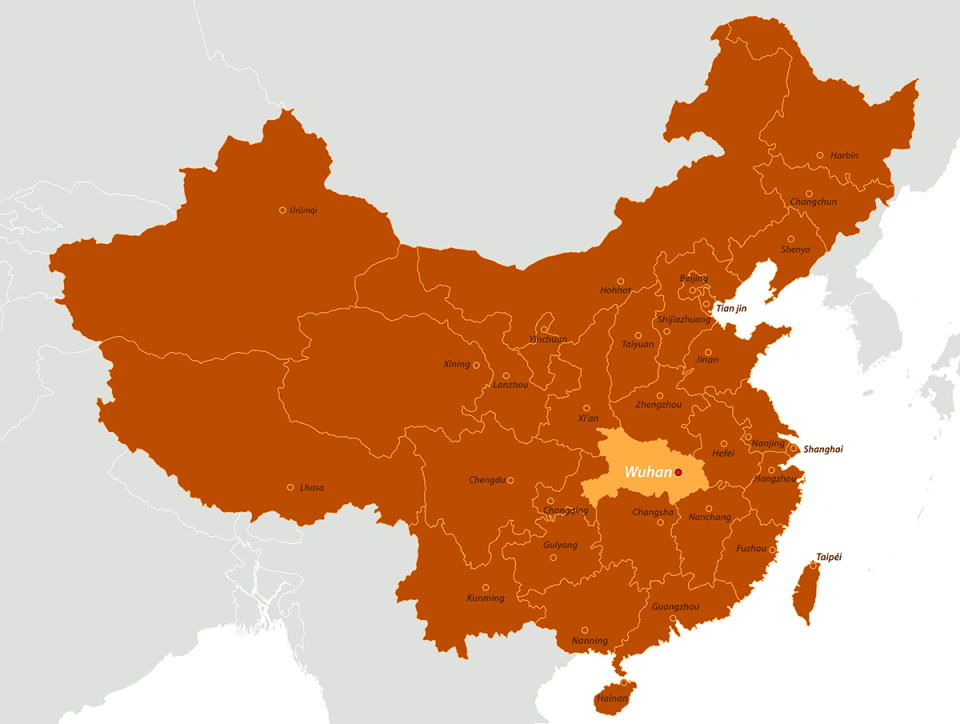Coronavirus FAQ and What You Really Need to Know

The coronavirus—which causes a disease that's been named COVID-19—has reached a global death toll of more than 180,000 people and infected more than 2.6 million all over the world.
COVID-19 has now reached all 50 states and every continent except Antarctica.
There are some simple precautions the general public can take include social distancing—even if you yourself are in good health and not generally worried about contracting COVID-19—thoroughly washing hands with soap and water for at least 20 seconds, using alcohol-based sanitizers, and avoiding touching your face.
⚠️This post is updating with the latest information as it becomes available.
In the Oxford, England, the first human trial of a COVID-19 vaccine have been given to volunteers. The BBC reports that half of the trial participants “will receive the COVID-19 vaccine, and half a control vaccine which protects against meningitis but not coronavirus.” Still, the only way researchers will know if the vaccine works will be to compare the “number of people who get infected with coronavirus in the months ahead from the two arms of the trial.” The outlet says that this could prove problematic if “cases fall rapidly in the UK, because there may not be enough data.”
People have taken to isolating themselves in an effort to help mitigate the spread of infection. Grocery stores, restaurants, schools, and offices are making efforts to minimize contact between people and The New York Times reports that the U.S. and Canada are closing their shared border “by mutual consent.”
The virus has killed more than 46,000 people in the U.S. and several thousand more across the world. The New York Times also reports that because COVID-19 has been infecting people via community spread, it may be “beyond ... containment.”
Popular Mechanics reached out to Vineet Menachery, assistant professor of microbiology and immunology at the University of Texas Medical Branch—Galveston, to talk about COVID-19: what it is, why it's spreading, and what you can do to stay safe.
What Is a Coronavirus?

COVID-19 actually belongs to a family of coronaviruses (CoV), which include Middle East Respiratory Syndrome (MERS-CoV) and Severe Acute Respiratory Syndrome (SARS-CoV). According to the World Health Organization, CoVs can afflict you with something as mild as the common cold or something as deadly as SARS. The virus affecting people now is what’s called a novel coronavirus (nCoV) because it's the first time this particular strain is being seen in humans. This coronavirus strain has been named Severe Acute Respiratory Syndrome Coronavirus 2 (SARS-CoV-2), while the disease it causes is COVID-19.
“Before 2002, [the term ‘coronavirus’] was associated with the common cold in humans,” Menachery tells Popular Mechanics. “In animals, it was associated with severe and often deadly enteric disease mostly in pigs, cats, and other mammals.”
“In 2002, the emergence of SARS-CoV changed that opinion as it caused a severe respiratory disease that spread across the world. SARS-CoV was traced backed to civet cats and raccoon dogs sold in live markets in China. The culling of these markets and strict quarantine ended the outbreak,” he shared.
How Does a Coronavirus Spread?
CoV’s are zoonotic viruses, meaning that they can be transmitted between animals and humans. In fact, MERS-CoV and SARS-CoV both reached humans by way of dromedary camels and civets, respectively.
“Sneezing, coughing, and other close contact likely drives infection,” Menachery says, especially if particles aerosolize during the removal of medical equipment, i.e.: intubation and/or extubation, during treatment. He notes that this was likely one of the contributing factors that helped the spread of the SARS virus.
How Did COVID-19 Get to the U.S.?

On New Year’s Eve, the WHO was alerted about several people from Wuhan who were presenting with pneumonia but with no known cause.
Then, between December 31, 2019, and January 3, 2020, 44 cases of people with pneumonia—again, with unknown origin or cause—were reported to the WHO. By January 11, China’s National Health Commission had shared additional details with the WHO that pinned the origin of the COVID-19 outbreak to a seafood market in Wuhan.
The first case of COVID-19 in the U.S. was announced on January 21, 2020, in Washington state. A man who had recently traveled through Wuhan came back to the U.S. and presented with symptoms of the new coronavirus. A specimen was taken from the patient and overnighted to the CDC where it was confirmed that the man had COVID-19 using a Real time reverse transcription-polymerase chain reaction (rRT-PCR) test.
On January 24, the first possible case of COVID-19 was announced at Texas A&M University, where a student was being monitored after presenting with symptoms of the virus. In a news release, the university said that the “immediate health risk to the campus community” was “low.”
As January 27, there were five confirmed cases of coronavirus in the U.S. with California and Arizona being the latest states to confirm as much. In the U.S., an additional 73 individuals are being tested for COVID-19. Their results are pending.
On January 29, a plane evacuating American citizens who had been living in or near Wuhan, landed at March Air Reserve Base in California. Everyone on board underwent multiple health screenings—in China, before boarding and again in Alaska, where the plane stopped for fuel—and passed.
What Safety Measures are Governments Taking?
The CDC reports that it has created a test to diagnose COVID-19 and is working with international health organizations and governments to administer the test in hopes of catching symptoms early on.
“The main goal of the government will be to limit spread of the virus and find its source. In China, front line workers in the healthcare system are wearing proper protective equipment to prevent their infection," Menachery says. "Patients are being held in isolation wards to prevent spread.”
Is There a Cure?
Currently, there is no cure or vaccine for COVID-19. However, now that the virus has been sequenced, chances of effective treatments—including the possibility of a vaccine—are more likely.
“There are no approved vaccines or therapeutics for any of the respiratory coronaviruses,” Menachery says, but adds that some studies preparing to enter the human trials phase “would likely be effective against this novel virus.”
Treatment for COVID-19 could see doctors prescribing remdesivir—an antiviral drug—which has shown “efficacy against CoVs early after the start of infection and has had success against Ebola,” Menachery says.
Scientists are working at “breakneck” speed to create a vaccine that'll stop the virus and the Coalition for Epidemic Preparedness Innovations (CEPI) announced that they would split $12.5 million between three companies—Moderna, Inovia, and the University of Queensland, Australia—to fund COVID-19 vaccine research.
Preventive Measures
According to the WHO and CDC there are preventive measures you can take to help protect yourself from COVID-19. They include:
Regularly washing your hands with soap and water for at least 20 seconds.
Using alcohol-based sanitizers when hand washing is not an option.
Covering your nose and mouth when you cough and sneeze.
Practice social distancing—keeping a couple of feet between you and other people—and self-quarantining.
If you present with any of these symptoms, call your healthcare provider immediately.
You Might Also Like

 Yahoo News
Yahoo News 